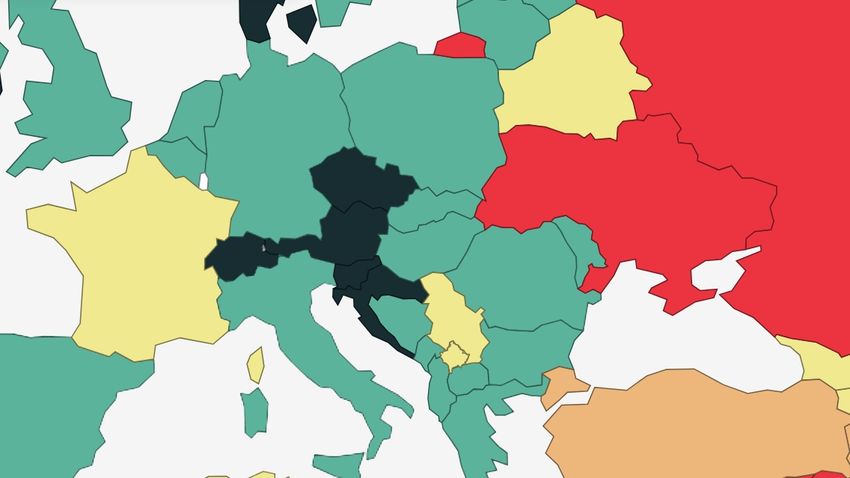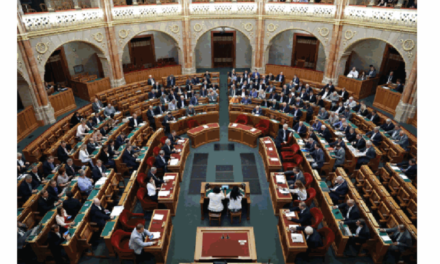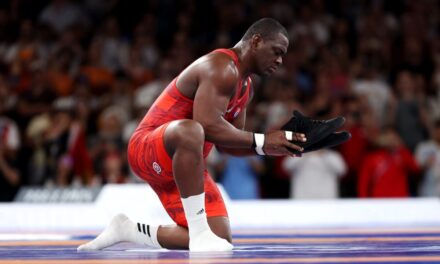The Global Peace Index once again ranked our country among the twenty most peaceful countries in the world.
Our world is in upheaval, the world order is changing, new wars are breaking out, old conflicts are rekindling, ethnic, religious and economic tensions continue to cause tragedies all over our planet - we read and see it in the news every day. But what is the overall picture?
The Global Peace Index shows which regions of the world are the most peaceful and which are the most dangerous and heavily conflicted regions.
The latest summary of this year's ranking list, published year after year, has just been published. This shows that our country is once again among the most peaceful countries in the world, along with several of its neighbors.
Overall, Hungary is achieving better and better positions in the Global Peace Index.
On the first list, in 2009, we were still in 27th place - we can remember that period of Gypsy murders, rioting far-right, the breakdown of public order under the failed Gyurcsány government. In 2020, however, we were in 24th place, and in 2021, in 19th place. Last year we came up to 13th place, and this year we are in 18th place on the ranking list.
The list is compiled by the Australian-based Institute for Economics & Peace, which assesses and ranks the countries of the world based on various indicators.
The data is compiled by the Economist Intelligence Unit of the British newspaper Economist for the ranking list.
During the compilation, among other things, the number and duration of internal conflicts of the countries, the number of deaths caused by external and internal conflicts, the development of relations with neighboring countries, the perception of the seriousness of crime in a given society, the presence of political stability or instability, the the chance of violent demonstrations and basic data on crime trends.
The Global Peace Index, which has been compiled for a decade and a half, shows the increasing number and severity of conflicts around the world in a trend-like fashion.
The 2023 ranking shows that the number of deaths due to conflicts has increased by 96 percent, and the results have worsened in six of the nine world regions. At the same time, the trends show mixed results: the situation has improved in 84 countries, while the situation has worsened in 79 countries.
There are no radical changes in the top twenty of the 2023 ranking compared to previous years.
Unsurprisingly, developed countries in more remote, "outer" places are in the lead, such as the first-ranked Iceland, followed by Denmark, Ireland and New Zealand. They are followed by our western neighbor, Austria, the strict city-state of Singapore, and two peaceful European countries, Portugal and Slovenia.
Then comes Japan, Switzerland and Canada, followed by the Czech Republic in 12th place, Croatia in 14th place, Germany in 15th place and the Netherlands in 16th place.
The peaceful little country in the Himalayas, Bhutan, is 17th, this time Hungary is 18th, and Malaysia is 19th on the ranking list – and the top 20 is rounded off by Belgium.
Several larger, or previously more peaceful, countries in Europe are now further back on the list. Norway is 24th, Slovakia is 26th, Sweden, hit by the wave of violence, is 28th, and Romania and Spain share the 31st place on the list.
Italy is 34th, Great Britain is 37th, while France, which is always seething, plagued by internal political disputes and terrorism, is only 67th in the world peace ranking - the French are currently between Armenia and Panama.
The United States, with its population armed to the chin and plagued by a constant wave of gun violence, ranks 131st among Third World countries, ahead of Haiti, Burundi and South Africa, and right behind it are Brazil, Eritrea and Palestine.
At the bottom of the Global Peace Index are the countries affected by continuous civil wars or warfare: the list of the last ten countries, starting from the worst, is as follows: Afghanistan, Yemen, Syria, South Sudan, Democratic Republic of Congo, Russia, Ukraine, Somalia, Sudan and Iraq.
Cover image: Detail from the Global Peace Index map













